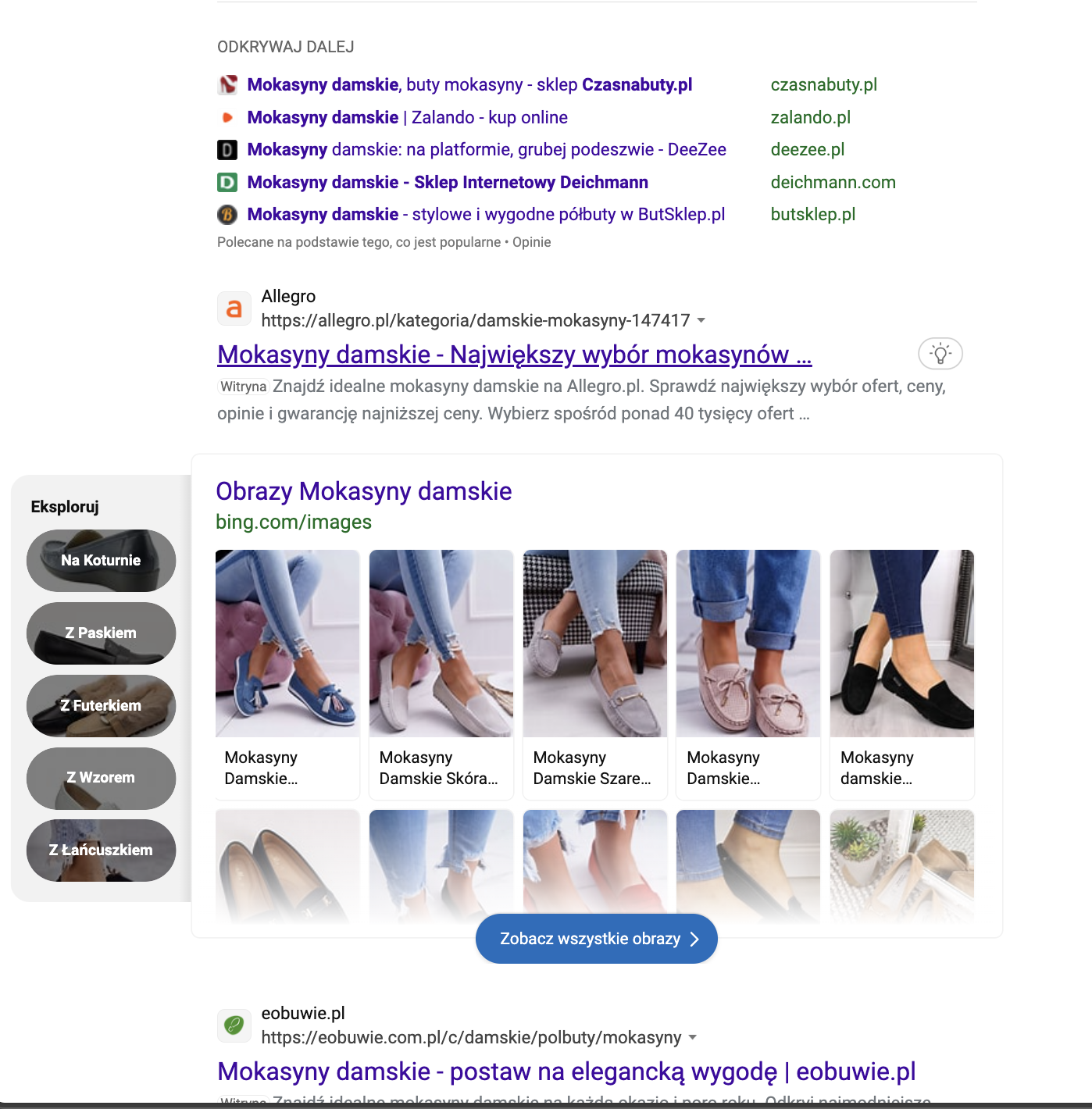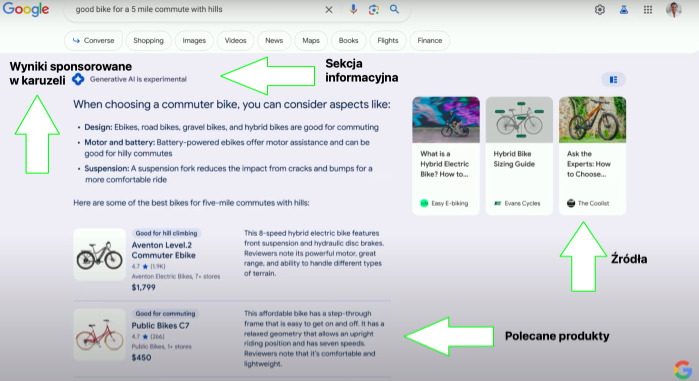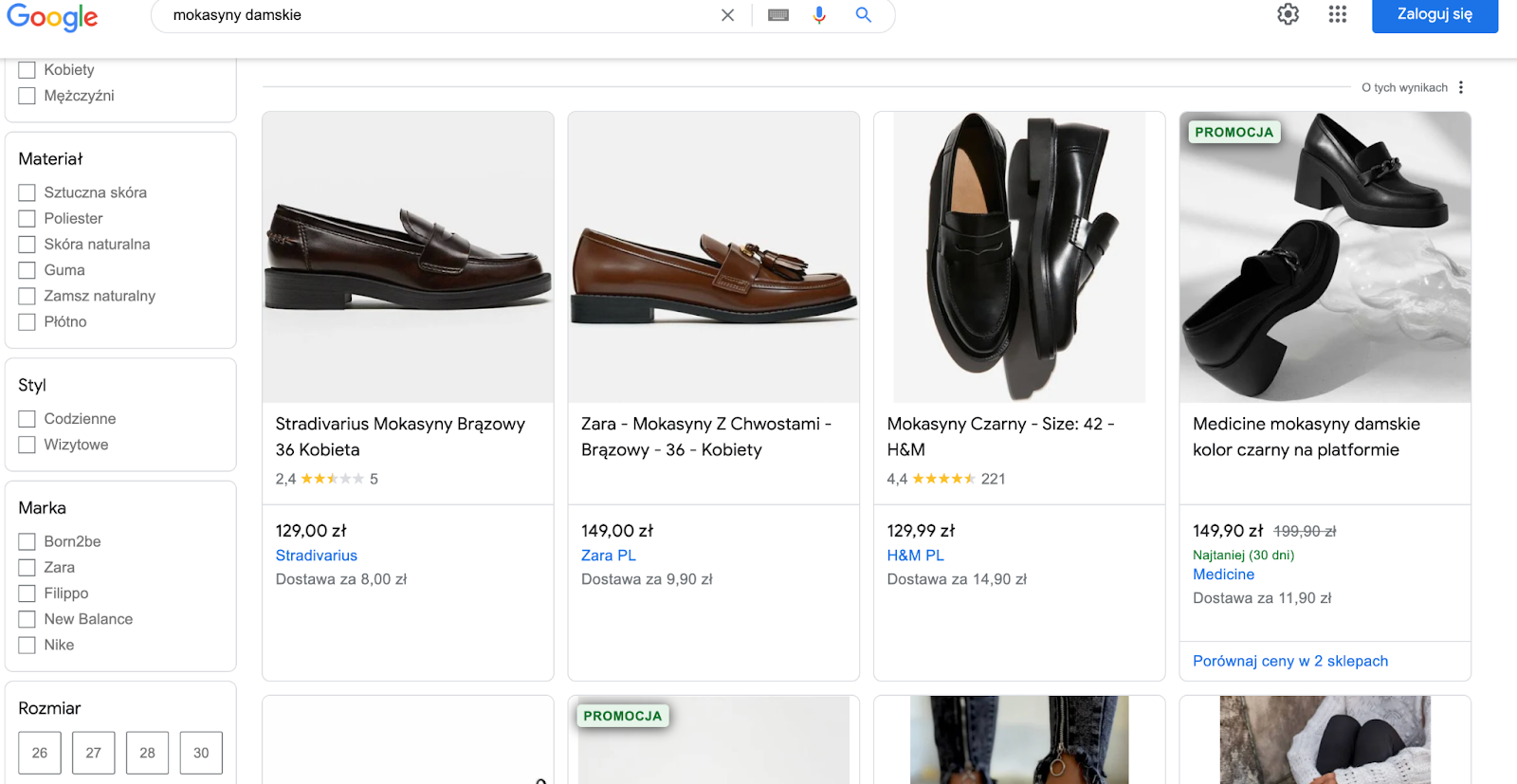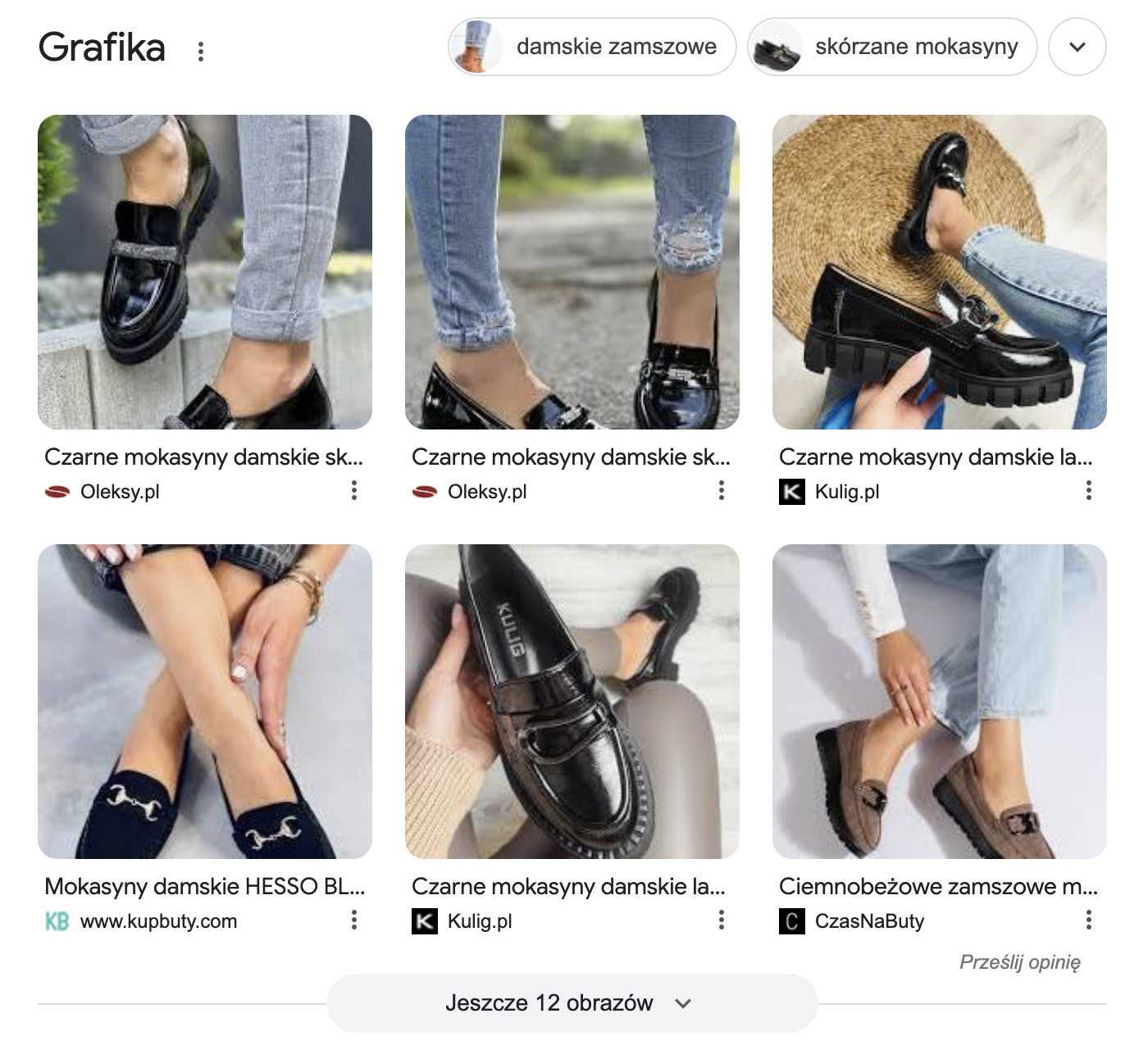Changes in the search engine – AI, SGE, GEN Z

Over the past few months, we have witnessed the development of AI capabilities, especially in marketing. It’s well known that the internet is full of theories about how AI can affect, among others, the professions we know or the way specific tasks are performed. Changes should also be expected in the e-commerce purchasing process and the general approach to searching for information. All thanks to the availability of chat functions in the search engine. Bing introduced the OpenAI mechanism to its browser some time ago, and Google released the Bard beta version (now Gemini), which will appear as the SGE panel in the search engine at an unspecified time.
The growing interest in ChatGPT coincided with the announcement of the tool itself. However, despite the decreasing trend in the middle of the year, it is still record-breaking.

As is well known, Google dominates the search engine market as the undisputed leader, while also offering an advanced ecosystem of tools such as Gmail and Google Sheets. Their strategy focuses on service integration, facilitating data management and collaboration. However, the recent months and innovations introduced by Microsoft to its software have sparked increased interest among users in Bing and its integrated AI chat, among other features.

The Google Trends chart for the last 12 months in Poland for the phrase “Bing czat”.
This also applies to Bard chat:

The Google Trends chart for the last 12 months in Poland for the phrase “Bard”.
It is important to note the differences in the application of a given tool. Currently, ChatGPT is more associated with automation and facilitating creative work. At the same time, Bard and Bing aim to revolutionize the way information is searched for and explored on the internet. We are talking about the so-called Conversational Mode – a way of acquiring information through specific queries from users via chat instead of the standard search engine.
In light of the presented charts and the growing interest, as well as the continuous work of OpenAI and Google on their models, the question arises: how will the increasing interest in AI and its capabilities translate into users’ purchasing processes, their information search, and the way they formulate queries?
Currently, search results in both Bing and Google are based on PPC ads and organic results, which we are all well familiar with.

The view of sponsored results for the phrase “mokasyny damskie” in Google.

The view of organic results for the phrase “mokasyny damskie” in Google.

The view of sponsored results for the phrase “mokasyny damskie” in Bing.

The view of organic results for the phrase “mokasyny damskie” in Bing.
Bing presents us with a relatively high position (2nd place) sections with thematic graphics, which additionally have the option to explore after further specification in Bing Shopping. Potentially, this could also increase the percentage of users utilizing Bing Shopping instead of Search.
However, considering the availability of AI chat in Bing, as well as the currently available beta version of Bard/Gemini, it’s worth thinking about the purchasing process that will evolve with these new features.
Bing, from the chat tab – currently not available by default in the search engine, only after clicking the “Chat” section – is capable of presenting product suggestions in text form with links to the relevant products/categories. Additionally, there are buttons available that make it easier for the user to refine their query, which are then converted into long-tail phrases/questions.

The view of the chat for the phrase “sandały damskie” in Bing.
Although Google currently lacks a similar option, the changes announced at the conference may shake up both the traffic previously obtained from phrases in positions 1-8. Currently, due to a series of available ads, usually 8 results are visible on the first page of search results. This could also impact the purchasing and decision-making process.

The view of the new SGE search results layout.

The view of the chat integrated into the new Google SGE search engine layout.
The new search results layout includes an AI section, right below the sponsored results carousel. This section provides essential information for the user about the searched phrase, available sources on the topic and recommended products (in the case of sales queries). Additionally, in the integrated Conversational Mode, unlike Bing, there will be a listing of products in a graphical form along with the stores where they are available, which in turn could potentially capture the user’s attention more effectively.
At the same time, it is important to note that despite searching for a fairly specific phrase, such as a bike suitable for a certain distance in mountainous terrain, the user receives mixed intent results – both informational and sales-related. This leads to the assumption that a site’s blog equipped with cross-selling and products containing links to related topic posts (in the form of thematic silos) might be what a potential customer is looking for. It is essential to remember that Google strongly emphasizes user needs.
Additionally, we are already observing changes in Google that are transforming this tool into a kind of e-commerce platform, for example, through the Shopping section and facade navigation.

The view of the Shopping section in Google for the phrase “mokasyny damskie” with facade navigation on the left side.
Moreover, in Google Search, we encounter product boxes, somewhat in the style of Google Shopping, which potentially shortens the purchasing path and attracts attention.

The view of product boxes in Google Search for the phrase “mokasyny damskie”.
On the other hand, using the experimental version of Bard in conversational mode, we already receive links to specific products (which is not available in Bing Chat). This also allows making a purchase based on the conversation held with the language model.

The view of a conversation with Bard/Gemini featuring suggestions of links to products.
The changes implemented by Bing and Google will primarily concern the way information is searched for. At this point, it’s worth considering another functionality that has revolutionized the practices of acquiring data from SERPs – namely Voice Search. In 2023 alone, 1 billion voice searches are conducted each month through mobile and voice-activated devices. Voice Search is one example of behavioral changes in data searching due to available technologies. Additionally, attention should be paid to Generation Z and every generation that follows. The way information is searched for by so-called Zoomers differs drastically from the way we, the millennials, or our parents, do it. For instance, TikTok is currently being used by Generation Z women to acquire information, not Google. Thus, a revolution in search results, as well as the way information is prepared and presented, is getting closer – the current internet and websites must be ready for young customers and their preferences.
Considering the planned changes in Google, as well as those already present in Bing, it is essential to primarily focus on the information contained within the site. This includes details concerning products, such as their descriptions, names, current prices, ratings, and reviews, as well as informational content available on, for example, a blog. Another issue is visual elements, the use of TikTok and Instagram, and video presentations to attract Generation Z customers. Providing users with comprehensive, attention-grabbing, target group-tailored, and visually appealing information, potentially essential during the purchasing process. It increases the chances of websites being featured in the new section of Google. Maintaining a current position in the e-commerce market is possible, whether using Google or TikTok.
Currently, Google dominates the online search engine market. However, it is crucial to continuously monitor the growing interest of users in Bing and TikTok, to properly adjust actions and ensure visibility for important keywords also on these platforms.